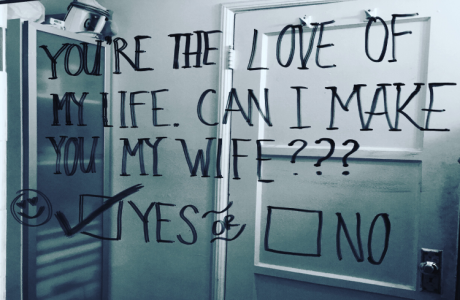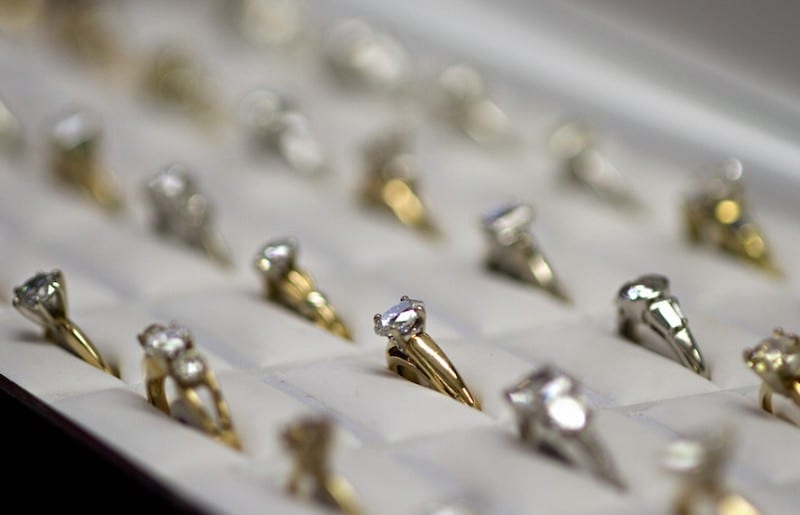
There’s a lot to consider when it comes to the actual logistics of a proposal: Where you’re gonna do it, when you’re going to do it, and what (or who) else is involved when you pop the question. Chief among the concerns: Is it going to be serious-romantic or funny-romantic? Does it need to be unique? You get the drift.
But there are also the basics to consider, like which hand you’ll use to hold the ring box — and which knee you’ll lean on when proposing. But why do you even have to go on bended knee in the first place—and does it really matter which knee?
The History of Getting Down… on One Knee
“Traditionally, getting on bended knee is a sign of respect, honor, and surrender,” says Elizabeth Tulipana, a wedding planner and owner of Chicago-based Anticipation Events. “If you were being knighted in Medieval times, you kneel in front of a queen to receive your award as a sign of respect.”
Specifically, knights always went down on their left knee, notes Michele Velasquez, owner of The Heart Bandits, a proposal planning company. And when you fast forward to modern day, “kneeling is a sign of respect, loyalty and admiration,” but is no way an absolute requirement when it comes to popping the question. “It’s not mandatory, but it’s part of the tradition (of getting engaged) and many people do expect it,” Velasquez adds.
Go from zero to hero in five minutes: At James Allen or Blue Nile, you can adjust price ranges and other characteristics to see how many carats your budget buys. Their search tool is great. Their highly competitive pricing is too.
It’s important to note that the tradition of getting down on bended knee isn’t exclusive to one cultural group or geographic region. “I have planned thousands of events for people of Hispanic, Middle Eastern, Indian, African, Australian, Asian, and European descent, and almost everyone does take to a knee to propose,” Velasquez confirms.
What If You’re a Lefty?
If you think about the actual mechanics, going down on your left knee dictates the ring box be placed in the left pocket to then be retrieved by the right hand, placed in the left hand, and then opened with the right hand for the show-stopping moment. Considering most humans are right-handed, the approach makes sense. But by no means is there any disadvantage to switching it up if you have an injury or just a preference for your right knee. (We all have weird things, right?) “There’s no real disadvantage—just make sure the ring is accessible and that you don’t have to fumble to get it,” says Velasquez.
Another Reason to Propose on One Knee
If there’s any disadvantage, she argues, it would be if someone proposed without going down on either knee at all. “Your partner may really want that because it’s seen as traditional (to do so); people expect it,” she adds. “Also, if there is a photographer, you wouldn’t get that proposal shot that people are typically seeking and expecting.”
But of course if someone is unable to get onto his or her knee, any loving partner wouldn’t expect that from him or her in the first place, Velasquez argues. To the same effect, if it were particularly important for the proposing party to be down on one knee, he or she could do so with physical assistance planned in advance, she adds.
Don’t be a sucker: Buy rings from trusted online sources James Allen, Whiteflash, and Blue Nile. You’re guaranteed to find better and more in-depth information thanks to their videos and listing details.
What Comes After the Proposing?
Plans are required for the occasion anyway—you’re gonna need to have your strategy set for after your partner answers the big question. Better yet, two strategies: One if they say yes, and one if they say no.
But in the moment of the actual proposal, just remember to breathe. Because bottom line, jokes Tulipana, “If you have the wherewithal to think about which knee you should be getting on specifically before you propose, kudos to you for having nerves of steel.”



















